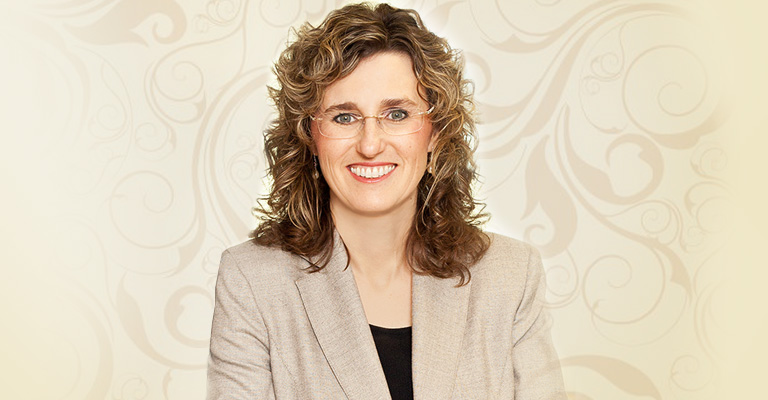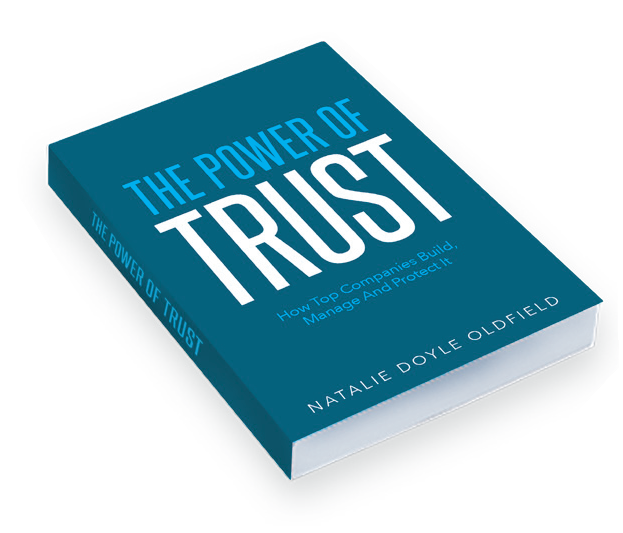Success Through Trust
Thursday, December 7, 2017
How to build, measure and protect trust in your company to see results on the bottom line
If you’re responsible for the success of a business and have a focus on the bottom line, chances are you regularly monitor a number of factors to keep revenue trending up. Sales, Revenue, and Profitability are some obvious ones, but have you considered the Customer’s Trust in your organization as a major influencer of your company’s annual growth rate?
Natalie Doyle Oldfield, a former Chief Marketing Officer with more than 20 years of experience working with a number of companies, found successful companies all had one thing in common. “Top companies have strong relationships of trust with their customers, partners, stakeholders and employees; it is part of their core business strategy and drives the success of those organizations.”
Oldfield has spent the past six years researching, writing, and teaching companies in Nova Scotia and around the world about her researched-based tools and award-winning programs that improve and protect customer trust. The program is based on her book, The Power of Trust: How Top Companies Build, Manage and Protect It.

Describing a more sophisticated customer, Oldfield explains today’s companies must focus on building trust.
“Almost every organization faces greater scrutiny from a more informed and critical customer. The days of intention-based marketing are over, it is all about relationships. Companies need more than innovative, best-in-class products and services. They need their customer’s trust. To me, it’s the most critical asset. Without trust there is no sale. We buy from people and organizations we trust.”
“Trust should be on the balance sheet, it is a key performance metric and an indicator of a company’s future success. Many believe what can be measured can be managed; trust can be measured and managed.”
Her first foray into researching trust led her to a study of the Royal Family in England — one of the world’s oldest organizations, examining how they rebuilt trust with the public with the wedding of Prince William and Catherine Middleton in 2011. Twenty years ago, after the death of Princess Diana, the British public pulled away from the monarchy, perhaps feeling as though they didn’t do enough to honour the People’s Princess, and the mother of their future king. Now, 20 years later, the world is once again paying attention to the Royal Family and people are anxiously awaiting news of the wedding of Prince Harry to Meghan Markle. Trust in the monarchy has been restored, with, as Oldfield says, the wedding in 2011 standing as a critical trust point for the organization.
As Oldfield continued to dive into trust, she began to realise it is one of the most critical organization issues. We see examples of it nearly everyday, with the erosion of trust in such companies as United Airlines, HSBC Bank, and BP after high-profile incidents. Today, more than ever people are skeptical, and because of that she says companies have to focus not only on building trust with customers, but protecting it as well.
And it’s more than just a hunch. Oldfield’s orginal research and her proprietary measurement survey, The Client Trust Index™, backed by advanced empirical testing with a large Canadian organization, has been taken through the four stages of assessment development and published in an academic journal.
Read more about NSBI’s Small Business Development Program
Through her research, Oldfield was also able to successfully confirm the strong correlation between trust and commitment; loyalty; satisfaction; likelihood to recommend; and of becoming a returning customer. This research also confirmed The Eight Principles of Building, Strengthening and Protecting Trust © are at the heart of the customer’s decision to trust an organization.
Based on the The Eight Principles, these are the questions a customer asks themselves when deciding whether or not to trust a company:
- Are they listening carefully with empathy and compassion? Are they involving me in discussions?
- Are they communicating using clear, concrete and conversational language?
- Are they honest and transparent?
- Are they consistent, predictable and reliable?
- Are they acting in my best interests? In the public’s best interests?
- Do they do the right thing? If they make a mistake, do they fix it?
- Do they deliver on their promise?
- Are they committed to the relationship long term? [1]
“These are the decision makers at the heart of how we decide to trust. Whether we are making a personal decision or a business decision, we use the same decision making process.”
Using these proven evidence-based methods, Oldfield works with companies to build, measure, and protect their relationships with customers by helping them build cultures of trust that focus on the customer. Although each case is different, Oldfield brings clients through a systematic approach.
By learning about their customers’ experiences with them and discovering where their organization might have holes that need plugging (be it in support, quality assurance, shipping, communication, workflow, or elsewhere), results from the Client Trust Index™ assessment provide a holistic view of the organization. Once gaps are identified, an action plan is put in place to fill them.
“The trust model includes eight principles to follow. When you apply these principles, you build trust, strengthen it, or protect it. Results from the Client Trust Index™ reveal hidden insights. My clients often tell me the results and the analysis is like ‘identifying the needle in the haystack.’ We identify specific initiatives and action items to address the gaps. Often they align with how a company behaves, commmunicates and serves its customers,” Oldfield explains.
To help companies around the world succeed in building trust, Oldfield has a number of resources available, from in-person presentations to online resources for a digital audience. Her offerings include an online certificate program (Becoming a Trusted Advisor), face-to-face seminars, coaching, online support groups, and a book, to name just a few.
Oldfield’s book, The Power of Trust: How Top Companies Build, Manage, and Protect it is available on Amazon or her website, and has already begun selling in countries like the United States, England and China. Amazon, says Oldfield, is very efficient, managing the supply chain, managing inventory, and printing on demand.

“To me it’s just amazing,” Oldfield said, about selling copies of her book in China. “One of the pieces of advice I would have is to think globally, because we’re very fortunate there are a lot of companies and platforms out there that support [entrepreneurs and small businesses]. I would also say there are a lot of surprises along the way, too.”




